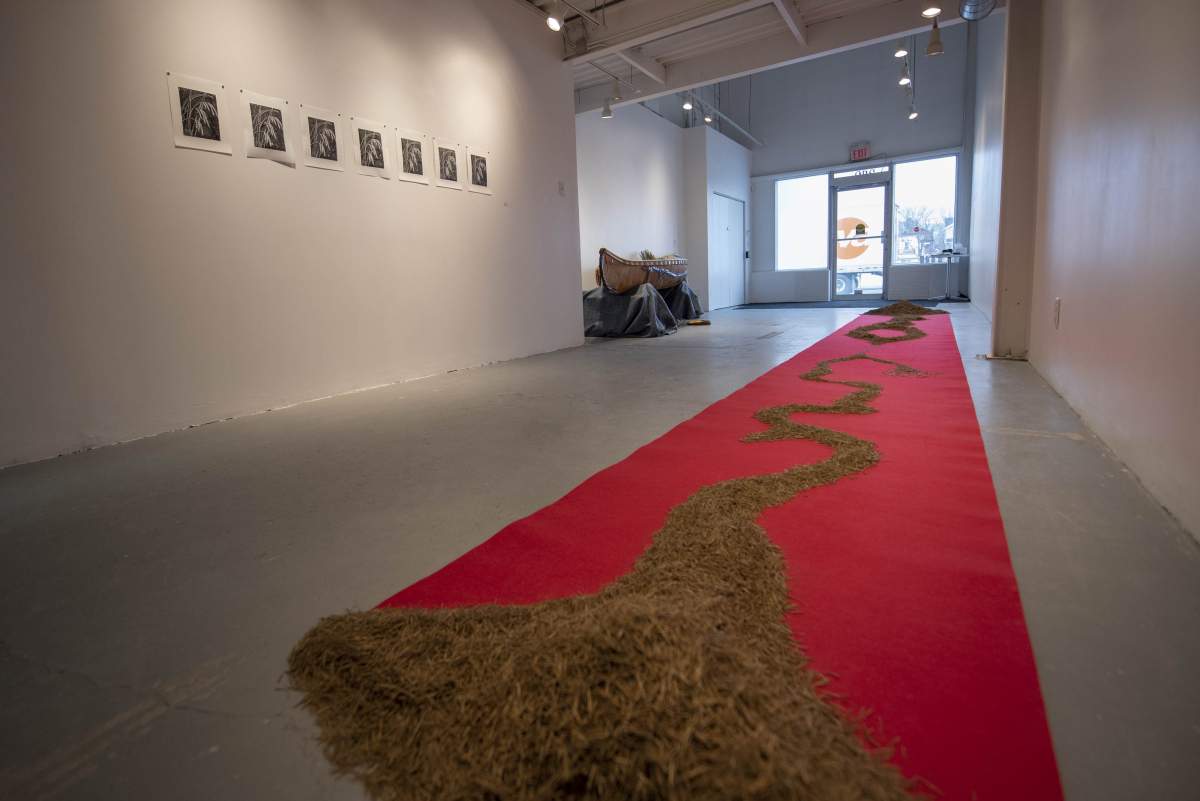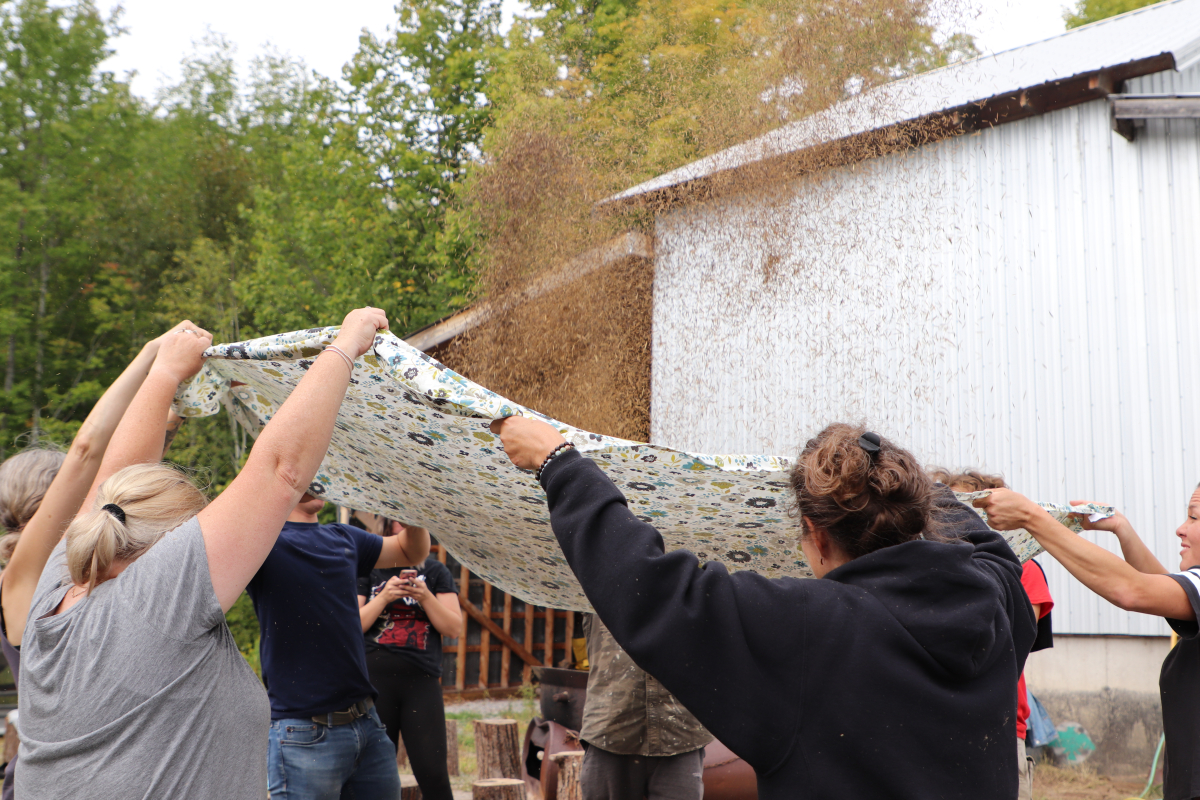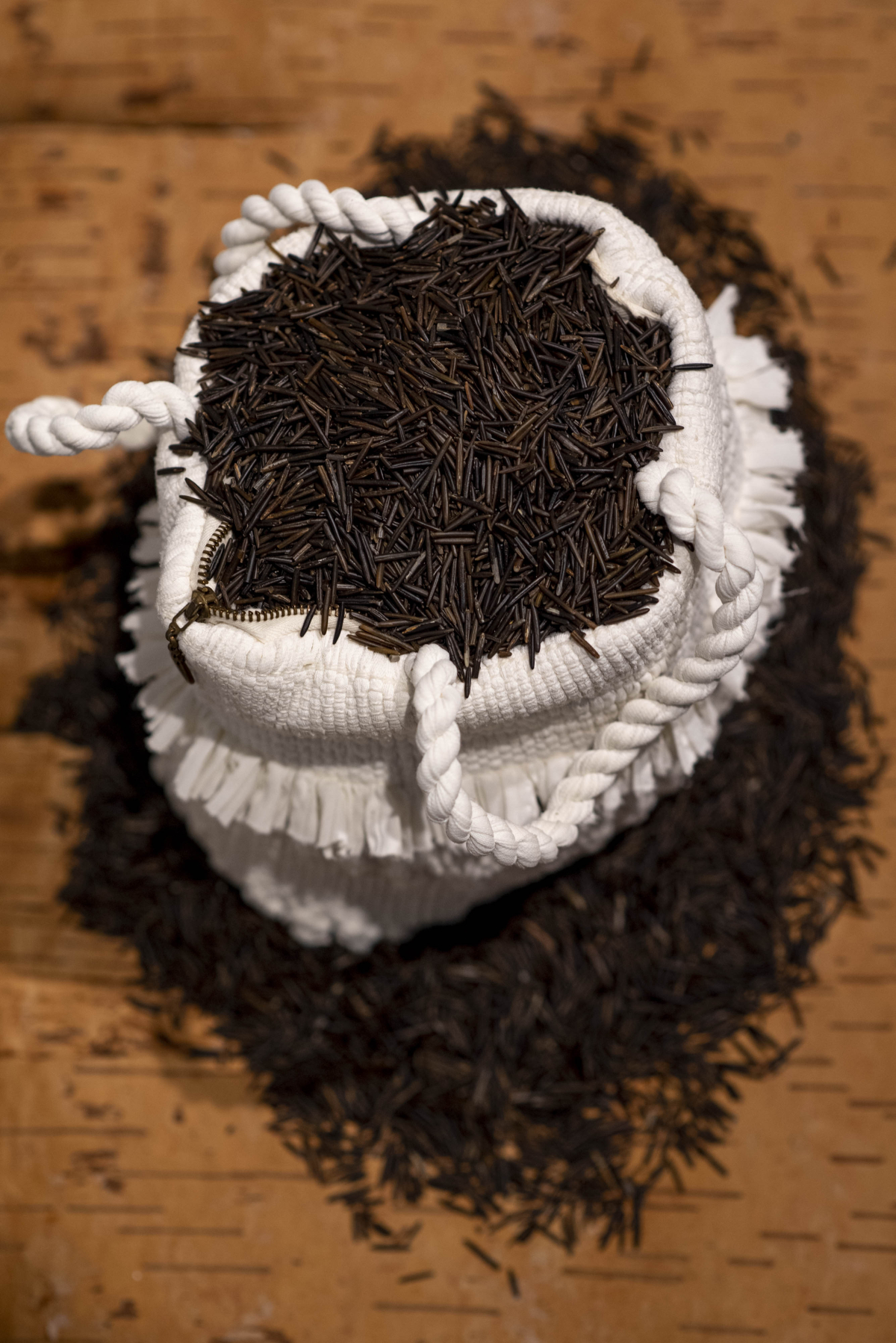Support strong Canadian climate journalism for 2025
Migrating Seeds, Gallery 101’s current exhibition, grew from a deep friendship between an artist and a curator from very different worlds who share the haunting grief and loss of colonial displacement.
Ginnifer Menominee, a mixed Ojibwe and Potawatomi artist, met Amin Alsaden, an Iraqi-born curator of the exhibit, a year ago. They were introduced by a mutual friend at an art opening and instantly clicked and later over dinner, hikes and gallery visits, they shared their pasts.
Alsaden had been displaced from Iraq, fleeing during the western invasion and occupation that began 20 years ago on March 20. It made him think about the heavy toll of that “brazen form of neo-colonialism” and how quickly the world forgot about the war and its aftermath, he wrote in an email.
“Iraqis are left to pay the price, and no one else can fathom the scale of that catastrophe or how it continues to haunt this community today.”
Menominee could relate.

The artist's ancestors were displaced and the generational ripple effect has informed their art, personal healing and community work. The Potawatomi were forcibly and violently displaced in the early 19th century after the American occupation of what is now Wisconsin and Michigan.
The nation was severed. Some Potawatmi fled north to Canada, others to the Prairies, and others were marched south to Oklahoma, Menominee said.
The Potawatomi lost everything: culture, homelands and identity, hiding themselves within another community to maintain who they were, they added.
The displacement cut their ties with wild rice, a crucial traditional food source found in both everyday life and in ceremonies around the harvest. Menominee, the artist’s surname, means the wild rice people in Anishinaabemowin, yet they had never husked, winnowed or danced on the wild rice as a child.

“If I'm a Potawatomi Menominee, why don't I have access to this? Where's this knowledge? And how can I reclaim it?”
Almost all the pieces in Migrating Seeds centralize wild rice. But a single grain of wild rice is never alone. They are always in heaps, symbolizing community.
An old basket weaved by Rosie, their great-grandmother, overflows with wild rice. Earrings with long beads joined together give the viewer a sense of conjoined wild rice. Photographs of community members celebrate togetherness.

In River of Blood & Seeds, a long red carpet rolls out for wild rice, but at opposite ends are two abundant piles of wild rice. In between the piles is a winding river of rice, in the middle, the connection is almost lost, but it returns to abundance again. A reclamation.
Menominee says their art is not based on “a singular individual spirit.” It’s about showing up for community, it’s about giving back, breaking cycles and providing care, they said.
In Gloucester Secondary Birch Bark Canoe, a canoe built by Indigenous students Menominee knows through their day job with the Ottawa-Carleton District School Board is presented to the viewer. The piece carves space for urban Indigenous students to reclaim their cultures in both the classrooms and art galleries.
It’s part of the reciprocity ethos Menominee strives for in their day job and art.
“I have an abundance of richness that I can share with people that I didn't at one point in my life, you know, but community gave me that abundance. So I feel it's my responsibility to give that back out.”

The work in Menominee’s first solo show speaks with Alsaden’s larger body of work curating artists, many of whom faced brutal colonial violence, displacement and a political struggle for belonging.
However, for Alsaden, that experience comes with an obligation “to reflect on what land means to me — the land back there, but also the land here, and my responsibility toward this place and its original inhabitants.”
It’s part of the reason he has centred artists like Menominee to encourage viewers to think about the stories presented in works, and those “irretrievably lost or hidden.”
Matteo Cimellaro / Canada’s National Observer / Local Journalism Initiative






Comments